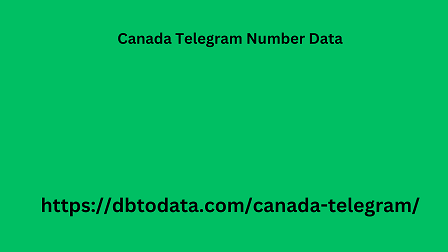Post by account_disabled on Mar 6, 2024 9:33:14 GMT 2
Why is the 4-Year-Old Vaccination Done? Why is 13-Year-Old, 1-Year-Old and 2-Year-Old Vaccinated? You can find all the details you are curious about and looking for on this subject in this article. The 4-year-old vaccine is a vaccine administered to strengthen children's immune system and provide protection against various infectious diseases. The 4-year-old vaccine is usually given when children are 4 years old or in preschool and may include a variety of important vaccines. The content of the 4-year-old vaccine is determined by the country's health authorities and vaccination schedule and may differ from country to country.
However, it may generally include the following Canada Telegram Number Data vaccines: Diphtheria, Tetanus, and Pertussis (DTaP): This vaccine protects against diseases such as diphtheria, tetanus (mushroom poisoning), and whooping cough (pertussis). These diseases can be especially serious for children Polio (IPV): The polio vaccine protects against the polio virus, also known as polio. Polio is a disease that can cause paralysis. MMR (Measles, Mumps and Rubella): The MMR vaccine provides protection against measles, mumps and rubella (rubella). This vaccine prevents these diseases that occur in childhood. Varicella (Chickenpox): The varicella vaccine provides protection against the varicella virus.

Chickenpox is an illness that can cause a severe rash and fever. Vaccination at the age of 4 is important to strengthen children's immune system and provide protection against these diseases. It also helps limit the spread of these diseases by building herd immunity. Health authorities recommend that children receive these vaccines on time and follow the vaccination schedule. If your child has an appointment for the 4-year-old vaccine, you can get more information about the vaccine by consulting your doctor or healthcare professional. Why is the 13-year-old vaccine given? The 13-year-old vaccine includes a series of vaccines generally administered at the age when children enter adolescence. These vaccines are given to protect children and young people against various infectious diseases.
However, it may generally include the following Canada Telegram Number Data vaccines: Diphtheria, Tetanus, and Pertussis (DTaP): This vaccine protects against diseases such as diphtheria, tetanus (mushroom poisoning), and whooping cough (pertussis). These diseases can be especially serious for children Polio (IPV): The polio vaccine protects against the polio virus, also known as polio. Polio is a disease that can cause paralysis. MMR (Measles, Mumps and Rubella): The MMR vaccine provides protection against measles, mumps and rubella (rubella). This vaccine prevents these diseases that occur in childhood. Varicella (Chickenpox): The varicella vaccine provides protection against the varicella virus.

Chickenpox is an illness that can cause a severe rash and fever. Vaccination at the age of 4 is important to strengthen children's immune system and provide protection against these diseases. It also helps limit the spread of these diseases by building herd immunity. Health authorities recommend that children receive these vaccines on time and follow the vaccination schedule. If your child has an appointment for the 4-year-old vaccine, you can get more information about the vaccine by consulting your doctor or healthcare professional. Why is the 13-year-old vaccine given? The 13-year-old vaccine includes a series of vaccines generally administered at the age when children enter adolescence. These vaccines are given to protect children and young people against various infectious diseases.




